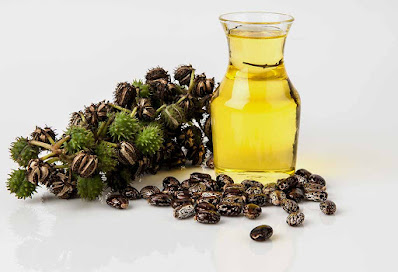Plant can defend itself from animals and humans with the help of poison. Let's see the most lethal plant on Earth.
This record of the most poisonous plant is nicely expressed on a years-old event.
In 1978, European country Bulgaria's anti-Russian leader Georgi Markov was walking on the sidewalk in London, Britain. Russia was communist at the time, and Bulgaria, like its armpits, was communist too.
However, Georgie Markov, a patriot, was holding a referendum against Russia's dictatorship, so the KGB, a Russian intelligence agency, decided to kill him.
 |
| Georgi Markov |
Pedestrians were coming and going on the sidewalk. Among them there was a man with an umbrella, He approached Markov, and suddenly, the sharp end of an umbrella pierced Markov's leg and poisoned his muscles through a needle.
Markov died shortly afterward. Postmortem examination revealed that he had been given a dose of a highly lethal poison called ricin. At that time science did not have an antidote for that poison.
Markov died shortly afterward. Postmortem examination revealed that he had been given a dose of a highly lethal poison called ricin. At that time science did not have an antidote for that poison.
Even the name of Ricin, considered a weapon of bioterrorism today, was not heard by the common people then.
Potassium cyanide is generally considered to be the deadliest poison, as a dose of just 0.5 grams is sufficient to kill the average adult. In fact, cyanide should be considered as a ‘mild’ toxic compared to ricin.
Ricin is about 1250 times more toxic than cyanide and a mere dose of 0.0002 grams can be lethal for humans. Even the venom of King Cobra stands nowhere compared to ricin.
Considering the unmatchable lethality of that poison, it is tempting to assume that its source may be of a rare type. This assumption is also wrong, as ricin is basically a product of the castor plant that provides castor oil.
Herman Steelmark, a chemist, extract ricin from castor seed in the 19th century and clarified its protein structure, and put it ahead of all other toxins on the scale of lethality.
Today, castor is the most widely grown crop in India and Brazil. The effect of ricin in the commercial castor oil is not particularly noticeable, as the heat given at a temperature of 140 degrees for a minimum of twenty minutes at the time of production breaks down the chemical composition of the ricin.
Of course, the husk of castor seed left after extracting castor oil does contain about 5% ricin by weight, which can be extracted by a high-tech process. But, not legally.
Castor itself is not harmful except for its well-known beneficial effect on the digestive system. But what is the reason for that mild effect? Putting the question in different words as well as in the context of evolution, why are some plants laxatives like castor?
This is a question that requires a separate article. Till then keep visiting our site for updates.





Post A Comment:
0 comments so far,add yours
Please do not add any spam link in the comment box